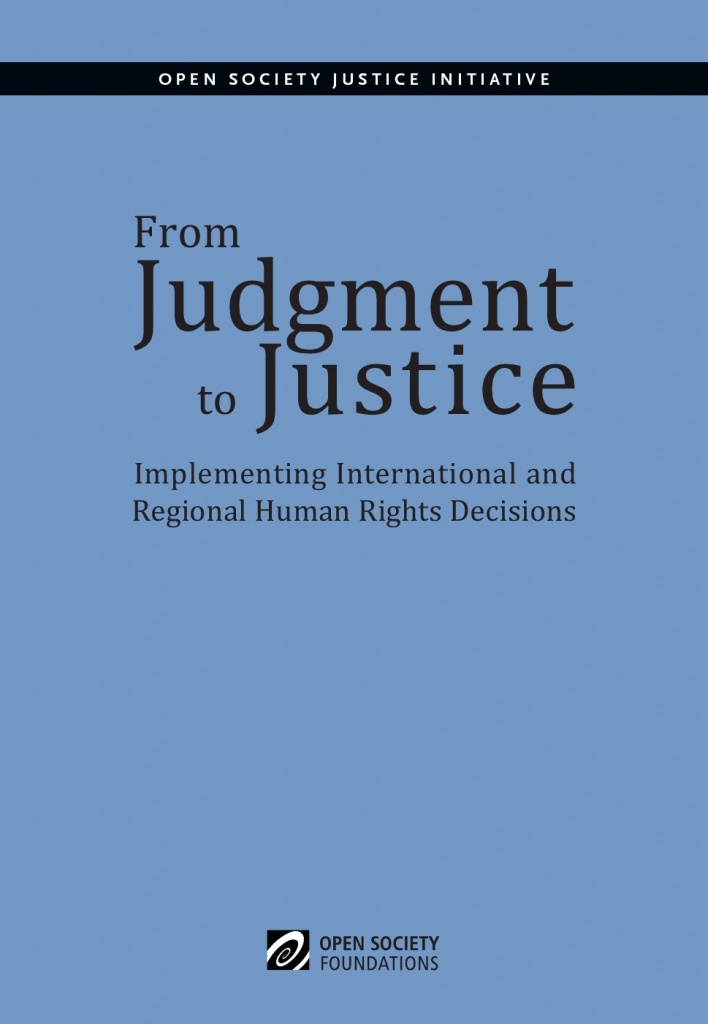Article 46 of the European Convention assigns the task of monitoring implementation primarily to the Committee of Ministers (CoM), rendering this body one of the most important actors in the implementation process. The CoM examines state compliance with ECtHR decisions four times a year during its Human Rights (“DH”) Meetings. The Committee is assisted primarily by the Department for the Execution of Judgments of the Council of Europe Secretariat. However, other Council of Europe organs, such as the Parliamentary Assembly (in particular the Committee on Legal Affairs and Human Rights) and the Human Rights Commissioner’s Office, also play a role in reporting on and raising awareness about states’ implementation records.
In addition, NGOs and other civil society or professional actors (such as counsel for the applicants) also have the potential to play an important role in the implementation process by keeping the Committee and the Department for the Execution of Judgments informed of developments on the national level after a judgment is issued. Without NGO input, the information received by the Committee from the Government may be one-sided. The Committee’s agenda is daunting; its agenda includes up to around 10,000 cases, and it depends on various actors to supply it with information in order to make its monitoring more effective. Although NGOs are not permitted to participate in the Committee’s quarterly DH Meetings, they can make official submissions to the Committee under Rule 9 of the Committee’s Rules.
According to its Rules, the Committee measures implementation of judgments by a state according to three main criteria:
1. Whether any “just satisfaction” (often a combination of pecuniary losses, non-pecuniary losses, legal fees, and interest payments) awarded by the court under Article 41 of the convention has been paid;
2. Whether individual measures have been taken to ensure that the violation in question has ceased and restitutio in integrum achieved—in other words, that the injured party is restored, to the extent possible, to the same situation he or she enjoyed prior to the violation;
3. Whether general measures have been adopted, so as to prevent “new violations similar to that or those found, putting an end to continuing violations.”
It is important at the outset to note that implementation, at least in the European regional system, generally refers to the last two criteria, for a simple reason. With few exceptions, CoE member states pay Court-awarded damages promptly; more difficult to monitor, implement and assess are the individual and general measures required in order to achieve full compliance with the judgment. These measures may be wide-ranging and politically controversial, and may often involve changes to legislation, policy and public perception of issues.
While a state’s obligation to abide by the judgments of the European Court is legally binding, the progress and success of full implementation ultimately depends on political will—both of the state itself and of other Council of Europe states, who, acting through the Committee of Ministers and the Parliamentary Assembly, have the power to apply varying degrees of political pressure on fellow states in relation to their implementation records.
_______________________________________________________________________________________________________________________
 “The implementation of its judgments is the central measure of a court’s efficacy. Without it, the situation of those who should be helped by the court’s ruling does not improve. Even the best and most profound jurisprudence may be deemed ineffective if not implemented, and the very legitimacy of the court itself may fall into question.” - From Judgment to Justice, a report by the Open Society Justice Initiative
“The implementation of its judgments is the central measure of a court’s efficacy. Without it, the situation of those who should be helped by the court’s ruling does not improve. Even the best and most profound jurisprudence may be deemed ineffective if not implemented, and the very legitimacy of the court itself may fall into question.” - From Judgment to Justice, a report by the Open Society Justice Initiative
______________________________________________________________________________________________________________________
